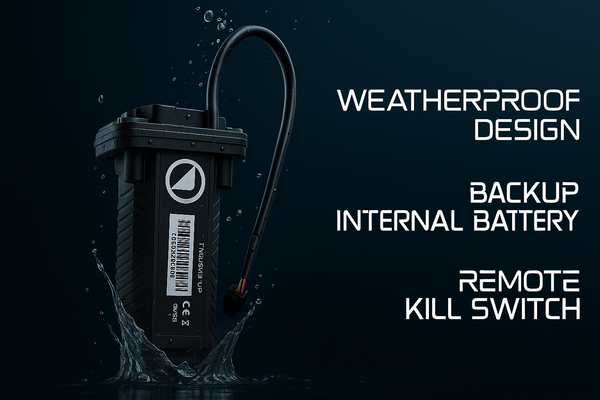Smart Car Buying for Rentals: Best Mileage & Year Models Explained
This blog explores the importance of mileage and model year for rental vehicles. Learn how they affect reliability, rental demand, maintenance costs, and profitability for Turo hosts, with expert tips on choosing the right vehicles for your fleet.

Why Mileage and Model Year Matter for Turo Hosts
As a Turo host, selecting the right vehicles for your fleet can make all the difference in your long-term profitability. Two of the most important factors to consider when choosing a vehicle are mileage and model year. These factors influence a vehicle’s reliability, maintenance costs, and rental demand, which can significantly impact your ability to earn consistent income.
In this blog, we will delve into why mileage and model year matter for Turo hosts, provide recommended mileage guidelines, explore how to select the right model year, and offer tips on balancing these factors for maximum profitability.
Reliability vs. Depreciation
Newer Vehicles: Fewer Repairs, Higher Costs
Newer vehicles generally require fewer repairs, which can be an important consideration when building your fleet. These vehicles often come with the latest safety features, improved fuel efficiency, and better technology, making them appealing to guests. However, the downside is that newer vehicles come with a higher upfront cost.
For hosts who want to keep expenses lower in the initial stages, purchasing a newer vehicle might not always be the best option. While they require fewer repairs, the cost of purchasing a new or nearly new vehicle can be a barrier.
Older Vehicles: Cheaper, but Higher Risk
On the other hand, older cars may come at a lower initial price, making them a more affordable option for hosts who are just starting out or those looking to diversify their fleet. However, older vehicles are often more prone to mechanical breakdowns and frequent repairs. This means higher maintenance costs and potentially more downtime if repairs are needed.
The trade-off is clear: newer vehicles are more reliable but cost more upfront, while older vehicles are cheaper but may require more frequent repairs, eating into your profits over time.
Rental Demand
Guests Prefer Low-Mileage, Well-Maintained Cars
When it comes to rental demand, guests tend to prefer vehicles that are low-mileage and well-maintained. This is because they associate these vehicles with reliability and comfort, leading to higher ratings and repeat bookings. A vehicle that has been well-maintained and has lower mileage is less likely to suffer breakdowns or performance issues during a rental period, ensuring that guests have a positive experience.
Impact on Ratings and Repeat Bookings
As a Turo host, having well-maintained, low-mileage vehicles is key to maintaining high ratings and a strong reputation. Guests are more likely to leave positive reviews for cars that run smoothly and don’t experience mechanical issues, which can directly impact your ability to secure repeat bookings. A car with higher mileage may experience more breakdowns or performance issues, which could result in negative reviews and fewer future bookings.
Maintenance Costs
High-Mileage Vehicles: Frequent Repairs and Higher Costs
As vehicles accumulate miles, their components begin to wear out more quickly. A high-mileage vehicle may need frequent repairs or parts replacements, such as brake pads, tires, or transmission work. This can quickly eat into your profits, especially if the cost of repairs is high.
For hosts managing multiple vehicles, high-mileage cars can mean more time spent on repairs, leading to higher operational costs and less availability for bookings.
Sensible Mileage Threshold to Avoid Extra Costs
To avoid the financial burden of frequent repairs, it’s recommended to set a sensible mileage threshold for your fleet. Many Turo hosts target vehicles with fewer than 50,000 miles. This “sweet spot” allows hosts to balance the upfront cost of the car with reduced risks of mechanical breakdowns, creating a more profitable rental experience.
Recommended Mileage Guidelines
Stay Below 50,000 Miles
For most Turo hosts, a vehicle with under 50,000 miles strikes the ideal balance between affordability and reduced mechanical problems. This mileage range means the vehicle is still relatively new, so it will likely experience fewer issues and require less maintenance, while also being priced more affordably than brand-new cars.
Consider Under 30,000 Miles for Premium Rentals
If you’re aiming for premium rentals or luxury vehicles, targeting cars with under 30,000 miles can provide several advantages. Lower mileage often translates to better performance, fewer repairs, and a vehicle that looks and feels more modern to discerning renters. Premium models with low mileage typically attract guests who expect high-quality, newer cars, which can justify higher rental rates.
Pay Attention to Service Records
It’s important to remember that mileage alone does not always tell the full story of a car’s condition. A well-documented maintenance history can be more valuable than a low odometer reading with no proof of care. A car with low mileage but poor maintenance might be more likely to break down than a higher-mileage car that has been well-maintained and regularly serviced. Always request and review the service history to ensure the vehicle has been properly cared for.
Choosing the Right Model Year
1–3 Years Old: The Sweet Spot for Newer Models
Vehicles that are 1–3 years old offer the perfect balance between reliability and cost. These vehicles are still relatively new and come with the latest technology and safety features, which appeal to guests. Additionally, they often still have warranty coverage that can help with major repairs, reducing the cost to you if anything goes wrong.
The downside to newer vehicles is their higher initial purchase price, which can make them less affordable, especially for hosts starting out. However, they offer long-term value by reducing maintenance costs and keeping your fleet in top shape.
4–6 Years Old: Reliable and Affordable
Vehicles that are 4–6 years old provide a great middle ground. The initial purchase cost drops significantly compared to new models, but the car can still remain reliable with some maintenance. Expect minor repairs and maintenance needs, but these vehicles typically remain good performers for several years before major repairs are necessary.
These vehicles are often the most affordable and offer a good opportunity to build a profitable fleet without the high upfront cost of newer vehicles.
Over 7 Years Old: Budget-Friendly, But High Risk
If you’re looking to expand your fleet on a budget, vehicles over 7 years old can be a great choice, provided you have the necessary mechanical expertise. These vehicles are significantly cheaper but come with higher maintenance risks. The car’s condition and maintenance history are especially important at this age. You’ll need to carefully inspect the vehicle for any issues and be prepared for higher repair costs as the car ages.
Red Flags and Previous Rentals
Ex-Rental Concerns
Ex-rental cars can sometimes be a viable option for Turo hosts, but they come with potential risks. Guests may have driven these vehicles more aggressively, and minor damage might not appear in the vehicle’s history report. However, rental agencies often perform routine servicing on their vehicles, so they tend to be well-maintained.
Inspection Essentials
When buying a used car for your fleet, it’s crucial to inspect it thoroughly. Look for mismatched paint, irregular panel alignment, or missing key fobs, as these can indicate previous accidents or poor repairs. Always request a vehicle history report (like Carfax) to verify the maintenance history and check for any major hidden accidents.
Tips for Balancing Mileage and Model Year
Match Market Expectations
High-end cities or airports may require newer models with minimal mileage to stand out in a crowded marketplace. If you’re renting in a competitive area, investing in newer vehicles with lower mileage can make your fleet more attractive to potential guests.
Budget Strategy
If you have a larger fleet, a combination of older and newer vehicles can help you serve different price points. Newer, low-mileage vehicles can cater to guests willing to pay a premium, while older models can provide affordable options to budget-conscious renters.
Frequent Reassessments
It’s important to regularly evaluate each vehicle’s performance. A low-mileage car may become less attractive after a few years if trends change, so regularly reassess the market and your fleet’s condition to ensure you’re meeting guest expectations.
Conclusion
Selecting the right mileage and model year for your rental vehicle is crucial for maintaining a profitable Turo business. Vehicles with under 50,000 miles and in the 1–6 year range often strike the best balance between cost, reliability, and demand. While ex-rental cars can be a viable option if thoroughly inspected, always prioritize the vehicle’s maintenance history and overall condition to avoid unexpected repair expenses.
By taking a thoughtful and strategic approach to mileage and model year, you can ensure your fleet is reliable, your costs are minimized, and your earnings remain steady. This careful balance is key to building a successful, long-term rental business.
FAQ
What is the ideal mileage for a Turo vehicle?
The ideal mileage for a Turo vehicle is generally under 50,000 miles. This range provides a good balance of affordability and reliability, reducing the risk of mechanical breakdowns.
How does model year affect Turo profitability?
Newer vehicles (1–3 years old) are more attractive to guests and typically require fewer repairs, but they come with a higher upfront cost. Older vehicles (4–6 years old) are more affordable but may require minor repairs.
Can I profit from high-mileage vehicles on Turo?
While high-mileage vehicles can be more affordable initially, they may require more repairs and frequent maintenance, which can increase your costs and reduce profitability.
How do I inspect a used car before buying it for Turo?
Always request a vehicle history report, check for mismatched paint or irregular panel alignment, and verify the car’s maintenance history to ensure it’s been properly cared for.
What should I do if my Turo vehicle starts to require frequent repairs?
If your vehicle begins to require frequent repairs, it might be time to reassess its value for your fleet. Consider selling it or replacing it with a newer, more reliable vehicle to maintain profitability.





